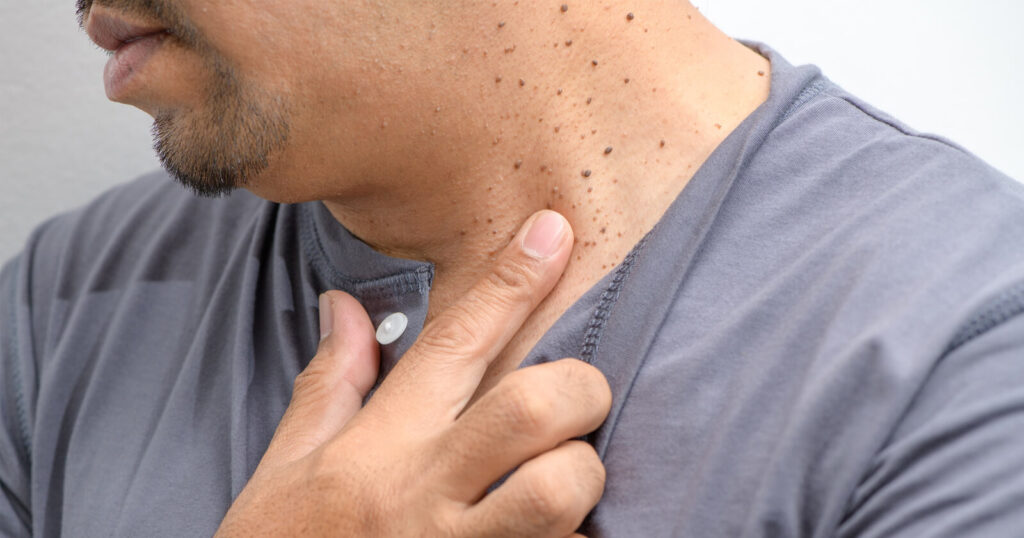Skin tags are small, benign growths that appear on the skin and are often considered a cosmetic concern rather than a medical issue. These growths commonly develop due to friction when skin rubs against itself, making areas like the neck, armpits, and groin more susceptible. Factors such as aging, obesity, and genetics also play a significant role in their formation.
Another key contributor to the development of skin tags is hormonal changes, which can explain why they are prevalent during pregnancy. Additionally, conditions like insulin resistance and diabetes are associated with a higher likelihood of developing these skin growths. Despite their harmless nature, many choose to remove skin tags for aesthetic reasons.
Various methods for removing skin tags exist, ranging from home remedies to medical procedures. Natural options include using tea tree oil or apple cider vinegar, which are believed to slowly dry out the tags. For those seeking quicker results, medical treatments such as cryotherapy or minor surgical removal are effective and widely available. These options ensure that individuals can choose a method that best fits their needs and comfort levels.
Understanding Skin Tags
Skin tags are small, benign skin growths that often appear in areas where the skin folds. They are generally considered harmless but can be irritating if located in areas prone to friction.
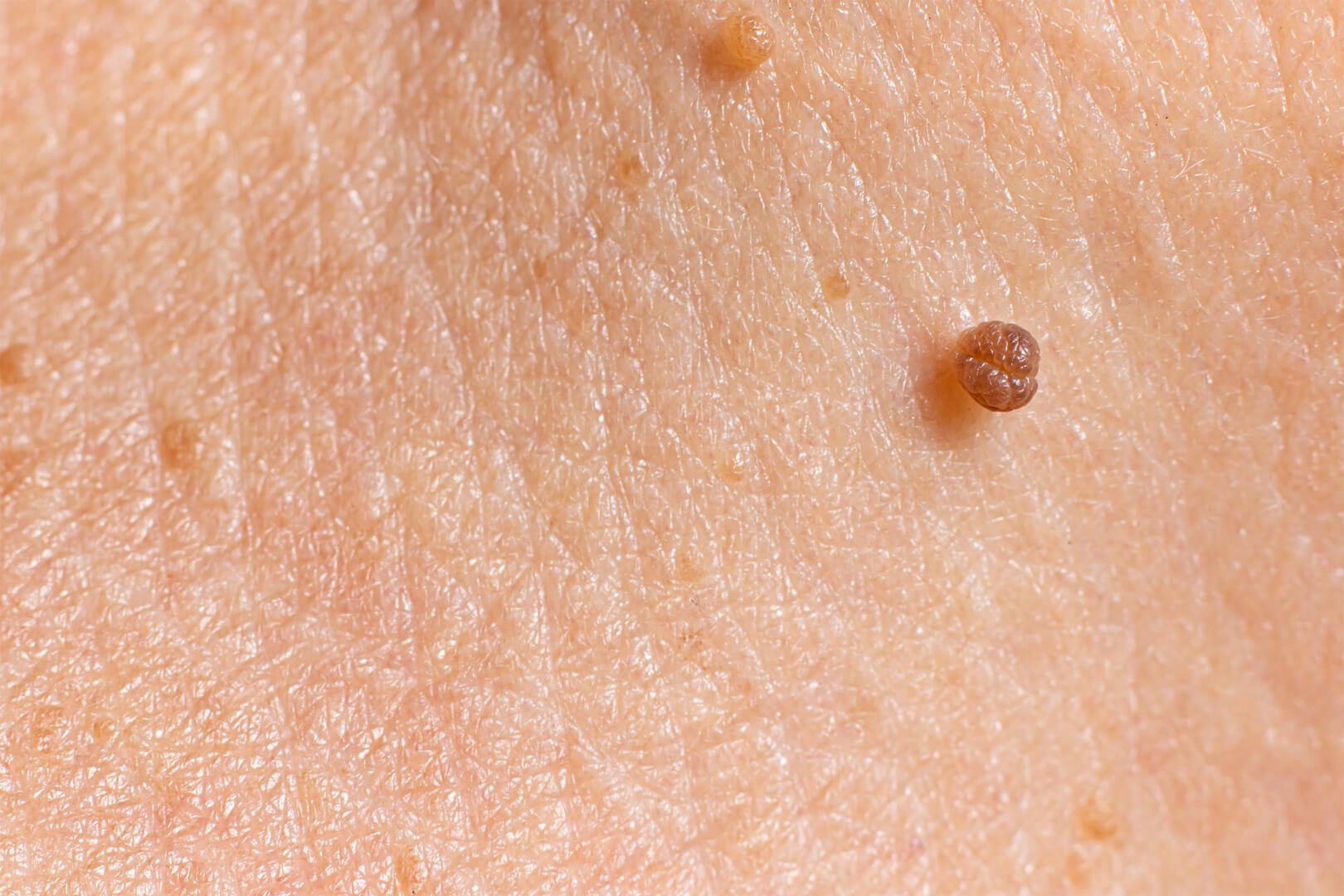
Definition and Description
Skin tags, medically known as acrochordons, are small, soft skin growths that commonly appear on the neck, armpits, groin, and under the breasts. They are usually flesh-colored and can range in size from a few millimeters to a few centimeters.
These growths are composed of collagen fibers, fat cells, and blood vessels, enveloped by a layer of skin. Skin tags are non-cancerous and typically do not cause pain unless repeatedly irritated by friction.
Prevalence and Demographics
Skin tags are quite common and can affect individuals of all ages. They are more prevalent in adults, especially those over the age of 50. Certain factors increase the likelihood of developing skin tags, including obesity, diabetes, and pregnancy. Hormonal changes and insulin resistance may contribute to their formation.
Men and women are equally susceptible to developing skin tags. Increased prevalence is noted among individuals with a family history of skin tags, indicating a possible genetic link. Although they are common, their presence can sometimes indicate underlying health issues, such as metabolic syndrome or cardiovascular diseases.
Causative Factors
Skin tags may appear due to several influential factors including friction from skin folds, genetic predispositions, and hormonal changes. Each of these elements plays a significant role in the formation of skin tags.
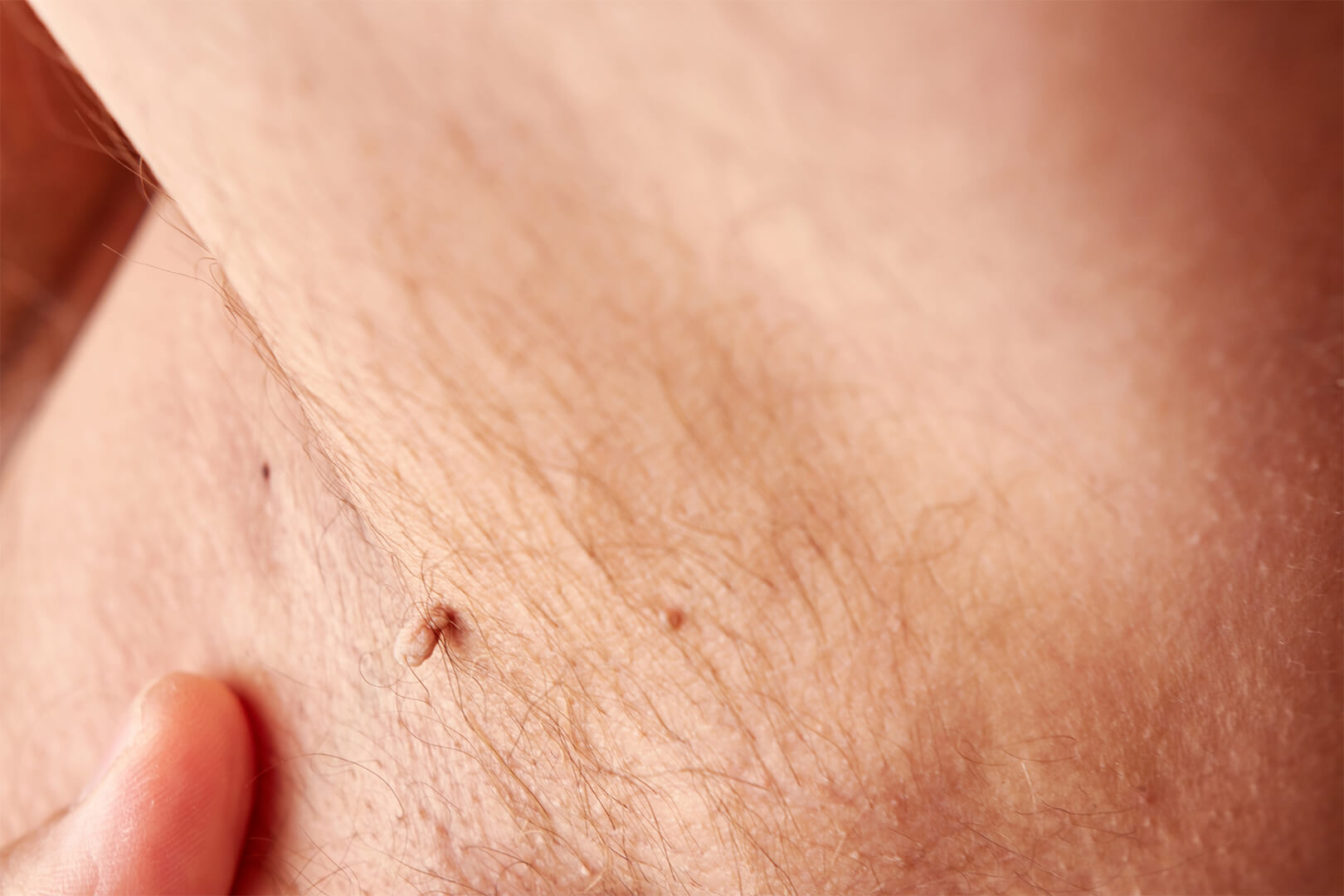
Friction and Skin Folds
Friction is a primary cause of skin tags, particularly in areas where skin rubs against skin. Underarms, neck, and groin are common sites because of frequent friction. Clothing can also contribute by causing rubbing, which leads to the overgrowth of skin cells.
In individuals with higher body mass, such friction occurs more often. This makes people with obesity more prone to developing skin tags. Tight clothing and accessories can exacerbate the issue by creating persistent contact points.
Genetic Factors
A hereditary tendency can make certain individuals more susceptible to skin tags. Families often share traits, including predispositions for skin conditions. If close relatives have skin tags, there is a higher likelihood that other family members will develop them too.
Genetic factors influence how skin cells grow and repair. Abnormalities in these processes can lead to excessive skin growth, resulting in skin tags.
Hormonal Influences
Hormonal changes play a crucial role, especially during pregnancy. Pregnant women often experience a surge in hormones, increasing the likelihood of developing skin tags. Conditions like polycystic ovary syndrome (PCOS) also contribute, as they cause hormonal imbalances.
Type 2 diabetes impacts hormone levels and metabolic conditions, elevating the risk of skin tags. Hormones can influence how skin cells replicate and how fast they grow, creating optimal conditions for skin tag formation.
Risk Factors
Risk factors for skin tags include age-related changes, weight, and obesity, diabetes, insulin resistance, and pregnancy. Each of these factors contributes uniquely to the development and frequency of skin tags.

Age Related Changes
As people age, skin tags become more common. Aging skin undergoes structural changes, losing some of its elasticity and becoming more prone to friction. The constant friction, often occurring where skin folds or rubs against clothing, facilitates the formation of skin tags. Additionally, older adults tend to have prolonged exposure to factors like UV radiation and pollutants, which may contribute to skin anomalies including skin tags. The likelihood of developing skin tags increases significantly after the age of 50, making age a key risk factor.
Weight and Obesity
Weight gain and obesity are prominent risk factors for skin tags. Excess body weight increases the surface area of the skin, leading to more friction in areas where skin folds over itself, such as the neck, armpits, and groin. This friction can result in the formation of skin tags. Higher levels of insulin, which are often present in obese individuals, may also play a role by influencing cellular growth mechanisms. According to the Dermatology Center of Northwest Houston, people with obesity are more likely to see an increased number of skin tags.
Diabetes and Insulin Resistance
Individuals with diabetes or insulin resistance are at an elevated risk for developing skin tags. In these conditions, the body’s ability to regulate blood sugar levels is impaired, leading to various skin issues. Insulin resistance, in particular, can cause skin cells to grow more rapidly, facilitating the formation of skin tags. The relationship between Type 2 diabetes and skin tags is well-documented, emphasizing the need for blood sugar management to minimize skin tag development.
Pregnancy
Pregnancy is another significant risk factor for skin tags. Hormonal fluctuations during pregnancy can stimulate the production of skin cells and increase friction in skin folds. Pregnant women often experience weight gain and body changes that create additional areas of skin friction, leading to a higher likelihood of developing skin tags. These tags usually appear on the neck, breasts, and other areas where skin may rub together. While the tags are generally harmless, they can be an annoying consequence of the physical changes that occur during pregnancy.
Physiological Mechanisms
Skin tags form due to specific physiological changes involving collagen and blood vessels and potentially due to Human Papillomavirus (HPV) involvement.
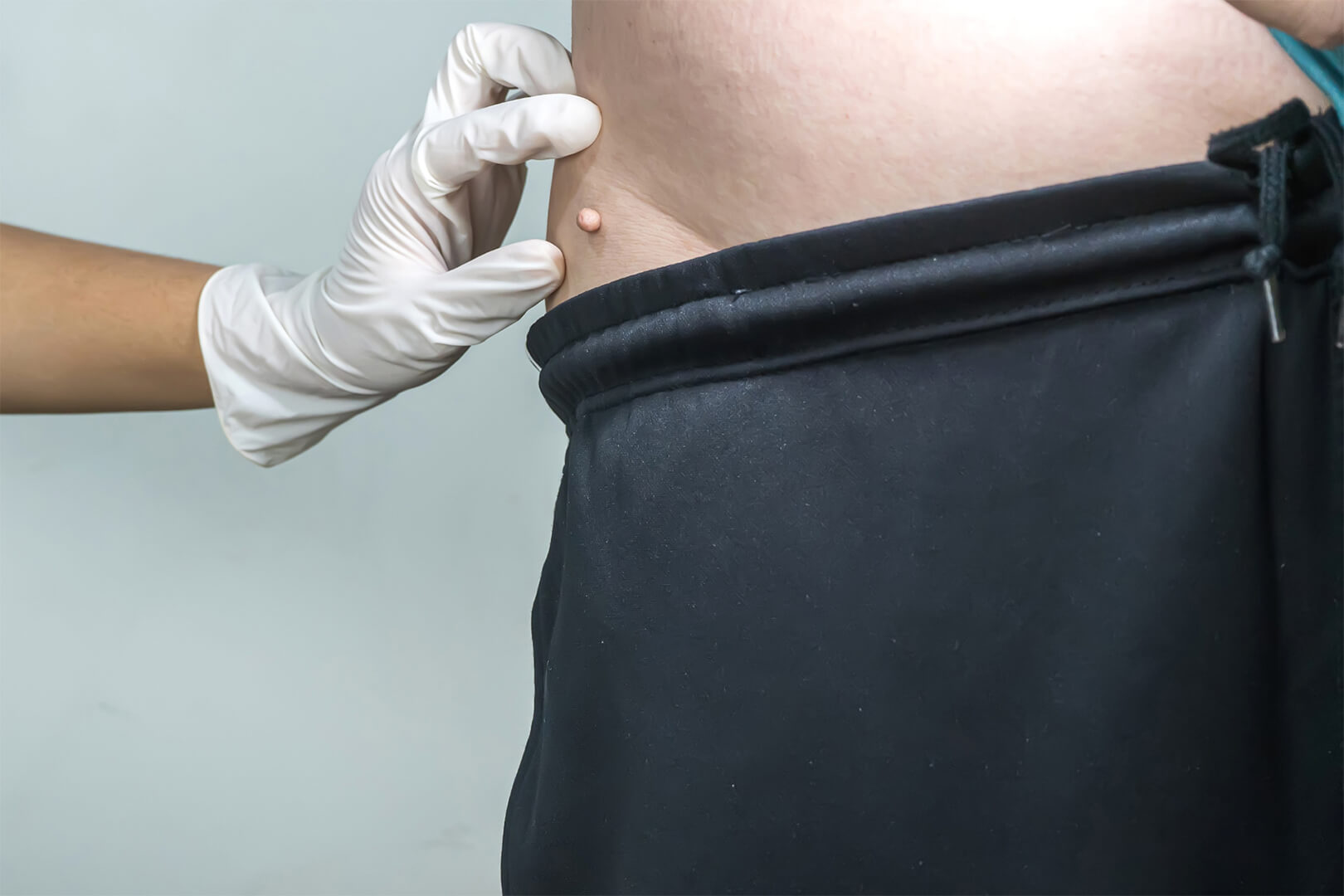
Collagen and Blood Vessels
Skin tags primarily consist of loose collagen fibers surrounded by blood vessels encased in the skin. Collagen is a structural protein that helps tissues maintain strength and elasticity.
When skin rubs against skin or clothing, it can cause collagen fibers and small blood vessels to clump inside the thicker parts of the skin. This can lead to the formation of a small, soft growth, commonly known as a skin tag.
The process often occurs in areas where there are skin folds, like the neck, armpits, groin, and under breasts. Obesity, aging, and hormonal changes can increase the likelihood of skin rubbing against itself, further promoting the development of skin tags.
HPV Connection
There is some evidence suggesting a connection between the human papillomavirus (HPV) and the formation of skin tags. HPV is known for causing warts and other skin lesions, but certain strains have been isolated from skin tags as well.
Studies indicate that HPV DNA can be detected in some skin tags, particularly in individuals with compromised immune systems. This suggests that viral infection could trigger or accelerate the growth of skin tags in susceptible individuals.
However, more research is needed to fully understand the role of HPV in skin tag formation. Preventative measures like good hygiene and avoiding skin irritation can help manage the risk.
Environmental and Lifestyle Factors
Environmental and lifestyle choices play a significant role in the development of skin tags. Factors such as clothing, jewelry, daily habits, and dietary choices can all contribute to the formation of these benign skin growths.

Clothing and Jewelry
Tight clothing and accessories can cause skin tags. Things like snug collars, undergarments, and bracelets can create constant friction against the skin. This continuous rubbing can trigger the growth of skin tags, especially in areas with skin folds or creases.
Wearing jewelry, especially necklaces and bracelets, can also lead to skin tags. Certain materials might irritate the skin, making these accessories another contributing factor to consider.
Individuals working in environments where they must wear tight uniforms or restrictive clothing are at an increased risk. It’s advisable for them to choose looser, breathable fabrics when possible.
Lifestyle and Diet
Obesity is a common contributor to the development of skin tags. Excess body weight increases skin folds, creating more opportunities for skin-on-skin friction, which can result in skin tags.
Conditions like Polycystic Ovary Syndrome (PCOS) and Type 2 Diabetes are also associated with higher incidences of skin tags due to hormonal imbalances and metabolic changes.
A diet high in sugars and unhealthy fats might contribute indirectly by leading to weight gain, which then promotes skin tag formation. Conversely, maintaining a balanced diet rich in fruits, vegetables, and lean proteins may help reduce the likelihood of developing skin tags by managing weight and overall skin health.
Regular physical activity is beneficial for weight management, which in turn can lessen the chances of skin tag formation. Adopting a lifestyle that includes both a nutritious diet and exercise can be an effective preventative measure.
Clinical Perspective
Understanding skin tags involves both accurately diagnosing the condition and implementing effective management and treatment strategies. Clinicians employ specific procedures to ensure proper identification and utilize several methods for removing or managing skin tags.

Diagnosis Procedures
Diagnosing skin tags typically involves a visual examination by a healthcare professional. These small, soft, benign growths usually appear on areas where the skin folds, such as the neck, armpits, and groin. They are generally flesh-colored or slightly darker and have a characteristic appearance that makes them distinguishable from other skin conditions.
In some cases, a dermatoscope may be used to get a closer look at the growth. Rarely, if the diagnosis is uncertain, a biopsy may be performed to rule out other skin conditions such as warts, seborrheic keratosis, or even skin cancer. Screening for insulin resistance is sometimes recommended for patients with multiple skin tags as it could indicate underlying metabolic issues.
Management and Treatment Options
Management of skin tags often involves removal for cosmetic reasons or if they cause irritation. Common methods include cryotherapy, where liquid nitrogen is used to freeze the tag, and electrocautery, which involves burning the tag off using electric current. These procedures are typically performed in a dermatology clinic and require minimal recovery time.
Other methods include surgical excision using scissors or a scalpel, and ligation, where a small string is used to tie off the tag, cutting off blood supply until it falls off. Over-the-counter solutions also exist, though professional medical advice is recommended for safe and effective treatment. For those with numerous skin tags, addressing underlying conditions like insulin resistance is crucial for long-term management.
Prevention Strategies
Preventing skin tags involves several approaches that can minimize the risk of developing them.
Maintaining a healthy weight is crucial. Excess body weight increases skin folds and friction, which can lead to skin tags.
Wearing loose-fitting clothing reduces skin friction, especially in areas like the neck, armpits, and groin.
Regularly cleaning and moisturizing the skin helps maintain overall skin health and may prevent skin tags. Keeping the skin dry is also important because moisture can increase irritation.

Diet and Nutrition:
- Eating a balanced diet rich in vitamins and minerals supports skin health.
- Drinking plenty of water keeps the skin hydrated.
Using products with natural ingredients like tea tree oil might help. Some recommend applying Australian tea tree oil to potential problem areas to prevent skin tags.
Skincare Routine:
- Avoid using harsh chemicals on the skin that can cause irritation.
- Regular exfoliation helps remove dead skin cells and reduces the risk of skin tags.
Individuals with a history of skin tags might want to speak with a dermatologist about targeted preventive measures. Dermatological advice can provide personalized strategies that consider specific skin types and conditions.
Research and Developments
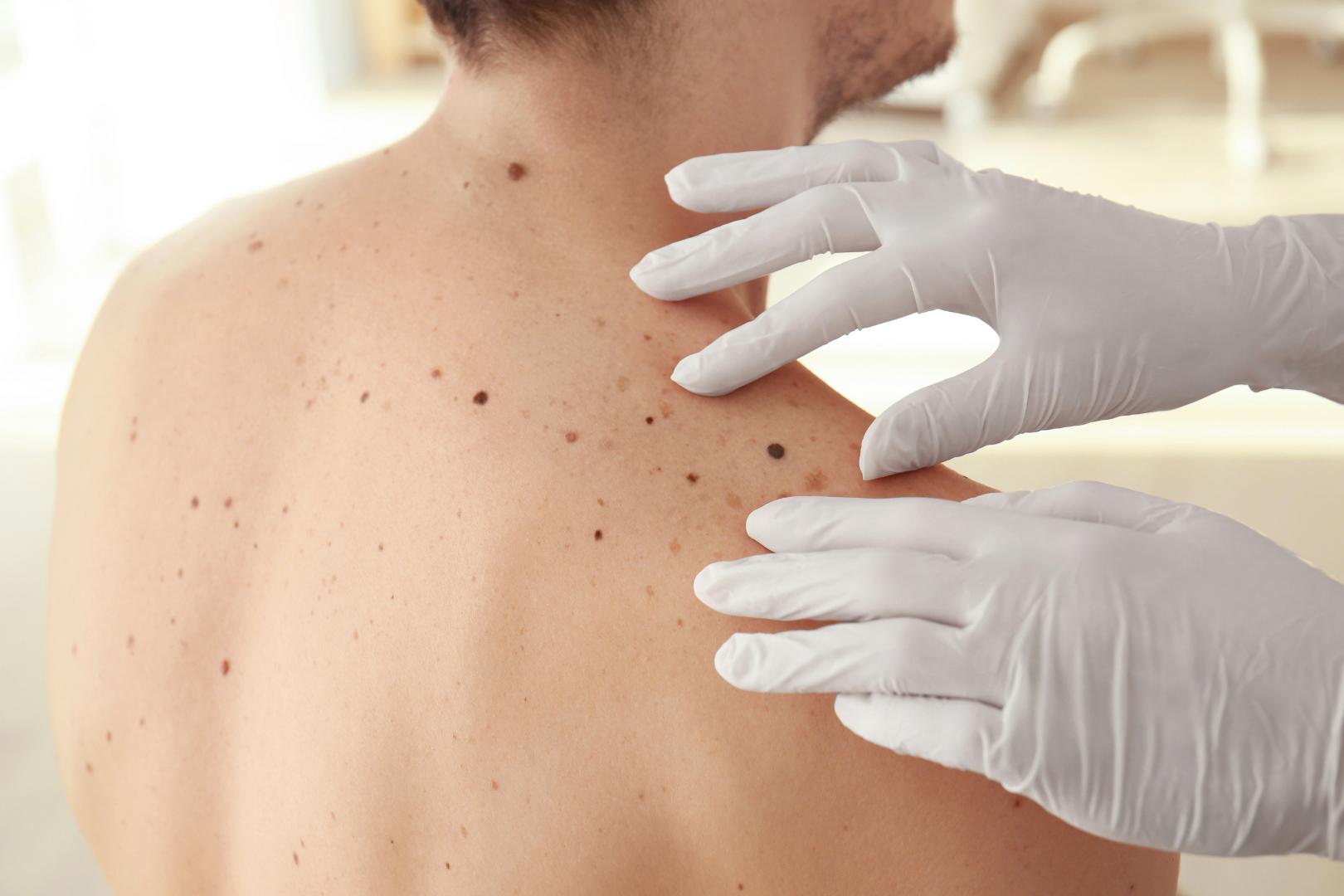
Studies on Causes: Recent studies indicate that skin tags develop due to collagen and blood vessels being trapped within thicker pieces of skin. These benign growths are more common in areas where the skin folds, such as the neck and armpits.
Genetic Factors: Genetics play a role, with some individuals having a higher predisposition to developing skin tags. Family history increases the likelihood of their occurrence.
Hormonal Influence: Pregnant women may experience an increase in skin tags due to hormonal changes. Elevated levels of growth factors contribute to their development during pregnancy.
Insulin Resistance: Research links insulin resistance and metabolic syndrome to a higher occurrence of skin tags. People with these conditions should monitor and manage their health proactively.
Treatment Innovations: Modern treatments for skin tags include cryotherapy, where they are frozen off using liquid nitrogen, and electrosurgery, where they are burned away using electric current. Both methods show high efficacy and minimal pain.
Laser Hypothesis: Laser treatments, though less common, are gaining attention. This method involves the use of concentrated light to remove skin tags. It offers a precise and less invasive option.
Home Remedies Caution: Numerous home remedies exist, but dermatologists caution against them due to risks of infection or improper removal. Professional consultation is always advised for safe treatment.
Preventative Research: Ongoing research aims to develop methods to prevent skin tags. Understanding triggers and developing topical treatments could significantly reduce their incidence.
These studies and advancements are helping to better understand, manage, and prevent skin tags.

